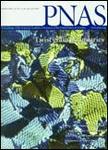版权所有:内蒙古大学图书馆 技术提供:维普资讯• 智图
内蒙古自治区呼和浩特市赛罕区大学西街235号 邮编: 010021

作者机构:Swiss Fed Res Inst WSL CH-8903 Birmensdorf Switzerland Univ Tromso Fac Sci Dept Biol N-9037 Tromso Norway Utah State Univ Utah Cooperat Fish & Wildlife Res Unit US Geol Survey Logan UT 84322 USA Univ Grenoble 1 CNRS UMR 5553 Lab Ecol Alpine F-38041 Grenoble 9 France Univ Lausanne Dept Ecol & Evolut CH-1015 Lausanne Switzerland
出 版 物:《PROCEEDINGS OF THE NATIONAL ACADEMY OF SCIENCES OF THE UNITED STATES OF AMERICA》 (美国国家科学院汇刊)
年 卷 期:2009年第106卷第sup2期
页 面:19723-19728页
核心收录:
主 题:climate change ecological niche generalized additive model geographic range species distribution models
摘 要:Understanding niche evolution, dynamics, and the response of species to climate change requires knowledge of the determinants of the environmental niche and species range limits. Mean values of climatic variables are often used in such analyses. In contrast, the increasing frequency of climate extremes suggests the importance of understanding their additional influence on range limits. Here, we assess how measures representing climate extremes (i.e., interannual variability in climate parameters) explain and predict spatial patterns of 11 tree species in Switzerland. We find clear, although comparably small, improvement (+20% in adjusted D-2, +8% and +3% in cross-validated True Skill Statistic and area under the receiver operating characteristics curve values) in models that use measures of extremes in addition to means. The primary effect of including information on climate extremes is a correction of local overprediction and underprediction. Our results demonstrate that measures of climate extremes are important for understanding the climatic limits of tree species and assessing species niche characteristics. The inclusion of climate variability likely will improve models of species range limits under future conditions, where changes in mean climate and increased variability are expected.